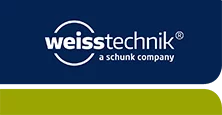The pipetting and aliquoting of substances in order to study or manufacture pharmaceutical products is generally subject to strict time and safety guidelines. The process is still predominantly carried out manually. This leads to disproportionate effort, especially when the process has to be started at varying times of the day and night and suitable personnel must be available for this. An automated robotics solution in an appropriate safety environment allows the process to be carried out more effectively and, above all, autonomously.
Such a project has now been jointly implemented for the first time in a collaboration between Essert Robotics from Bruchsal, which specialises in flexible automation solutions, and Weiss Pharmatechnik, a manufacturer of systems and safety workstations for the pharmaceutical and chemical industry based in Oldenburg in Lower Saxony. Not only the solution, but also the cooperation between the two specialists is characterised by a high degree of flexibility.
“We sought a partner that is able to modify its safety workbenches on an individual basis in such a way that we can couple them with our robotics. The fit must be simply seamless,” says Moritz Latzel from Sales Department at Essert Robotics. “Weiss Pharmatechnik was the only manufacturer to offer us this high flexibility.”
Specifically, the project involves to a 6-axis robot that is equipped with an electronic pipette and also takes on other handling tasks within the safety environment. “It is a fully fledged industrial robot,” Latzel explains how it differs from other, generally 3-axis automation solutions for laboratory applications. Its advantage lies in its long reach and high flexibility.
High process quality
The SteriClean robot, which was developed specifically for critical use in aseptic class A production areas, can access multiple source and target containers of various sizes, from a few ml up to 2 or 3 litres. Depending on the application, the material that is to be pipetted can also be divided among several containers. An electric gripper can be used to remove receptacles containing frozen media from a fully integrated ultra-low-temperature freezer. After a defined defrosting time, the caps of the source vessels are automatically twisted off, the medium is removed, and samples are taken from the designated vessels. Depending on the application, an automated decapper ensures a higher throughput, and the samples can be labelled fully automatically if desired.
The Essert OS operating system uses proven Audit Trail and PM Quality functions, with the result that the GMP requirements are completely satisfied. Exact positioning and multiple checks guarantee a very high process quality.
The process takes place on a Weiss Pharmatechnik class II microbiological safety workbench. This safety workbench in a special design was designed specifically to accommodate the Essert automation platform in compliance with DIN EN 12469. The workbench provides clean air of class ISO 5 in accordance with ISO 14644-1 or clean air class A in accordance with EU-GMP Annex 1 (aseptic conditions). In addition, the contamination areas located beneath the workbench are kept at low pressure by an inflow of 0.5 m/s, thereby preventing any particles from escaping from the work area. The required air is taken from the installation space and dispensed again at the top of the workbench via an HEPA filter. Therefore, a connection to a ventilation system is not necessary. “This optimally guarantees safety of personnel and product,” says Henning Falk, the Sales Manager at Weiss Pharmatechnik. The entire solution is made of stainless steel and meets all the requirements for a hygienic process. The compact design saves valuable laboratory workspace. The low-vibration, electronically controlled EC fans also contribute to the cost savings. In addition to their powerful and low-noise running performance, they are also highly energy-efficient.
A re-certification of the environmental conditions is not necessary
“As the manual process has already been performed in a safety bench, the environment variable has not changed, meaning that no re-qualification and re-validation is required for this part of the process,” emphasises Henning Falck. "The regulatory effort involved is simpler and it happens faster.” The safety workbench and the cleanroom robot are designed for a VHP biodecontamination with hydrogen peroxide.
The solution created by Essert Robotics and Weiss Pharmatechnik can be used to perform a wide range of standard laboratory activities entirely without human involvement and at any time. The system is in operation precisely when it is needed, allowing downstream processes to be served just in time. Manual errors, ineffective staff deployment with shift premiums, contamination risks for people and media and downtimes because of a missing or unusable batch can be consigned to the past.
